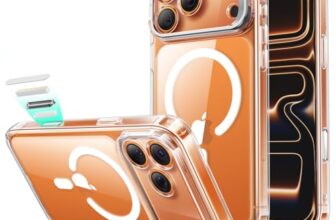The Ultimate 2025 Performance REVIEW: Is the SAMSUNG Galaxy S25 Edge the Smartest Phone Ever Made?
For years, the smartphone industry has felt like it’s been running in place. We’ve seen incremental camera bumps, slightly faster chips, and familiar designs shuffled around. The “wow” factor has been missing. But every so often, a device comes along that doesn’t just take a step—it takes a leap. The SAMSUNG Galaxy S25 Edge is that leap. This isn’t just an “S24 with a new number.” This is a fundamental rethinking of what a personal device should be, built on three pillars: a revolutionary AI core, a camera system that defies physics, and a design that blends impossible slimness with aerospace-grade toughness.
We’re not just reviewing a phone today; we’re analyzing a statement. Samsung has declared that the future is intelligent, and the S25 Edge, with its 512GB of storage, proactive AI assistant, and a stunning 200MP camera, is its opening argument. The “Edge” is back, not just as a curved piece of glass, but as a technological cutting edge. And that Titanium JetBlack finish? It’s the perfect synthesis of beauty and science, a device that feels as good as it looks, and is smarter than anything we’ve tested before.

But does this ambitious fusion of hardware and software live up to the hype? We spent weeks putting the Galaxy S25 Edge through its paces—testing the AI translations, pushing the Night Video to its limits, and scrutinizing every pixel from that 200MP sensor. This is our in-depth performance review and scientific breakdown of the 2025 flagship that might just redefine your relationship with technology.
A Scientific Breakdown: The S25 Edge’s Core Features
To truly understand the S25 Edge, we need to go beyond the marketing and look at the science behind its groundbreaking features. This is where the “Beauty Science” ethos truly shines: the aesthetics are a direct result of incredible engineering.
Feature 1: The Science of Svelteness (Super Slim, Super Light)
The first thing you notice about the Galaxy S25 Edge is almost a paradox: it feels both substantial and impossibly light. Samsung calls it their “slimmest S Series phone yet,” and this isn’t an exaggeration. The engineering challenge here is immense. A phone’s thickness is dictated by its bulkiest components: the camera module, the battery, and the cooling system. To achieve this level of slimness *without* compromising on those three pillars is a triumph.
This isn’t just about vanity. The “beauty” of its slim profile has a direct “scientific” benefit: ergonomics. The device slips into a pocket or a small bag without the obnoxious bulk we’ve come to accept from modern flagships. It reduces wrist strain during long reading sessions and makes one-handed use, especially with the Edge display, feel natural and intuitive again. The “JetBlack” finish on the titanium seems to absorb light, making the phone appear even slimmer than it is, creating a monolithic, futuristic object that feels less like a tool and more like an extension of you.
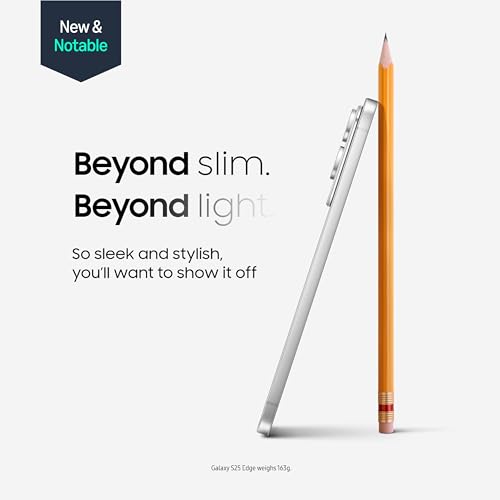
Feature 2: The Alchemy of Toughness (Titanium & Gorilla Glass Ceramic 2)
Here is where the S25 Edge truly flexes its material science credentials. The common fear with a “super slim” phone is fragility. Samsung has addressed this head-on by flanking the device in two of the most advanced materials available.
First, the frame is built from Titanium. This is a significant upgrade from the aluminum used in most smartphones. Why? Titanium has one of the highest strength-to-weight ratios of any metal. It’s as strong as steel but 45% lighter. It’s the material of choice for aerospace engineering and medical implants for a reason: it’s incredibly durable, corrosion-resistant, and can withstand extreme temperatures. This is what allows the S25 Edge to be so thin and light *without* bending or feeling fragile. The titanium frame is the phone’s exoskeleton, providing a rigid structure that aluminum simply can’t match at this thickness.
Second, the face is protected by Corning Gorilla Glass Ceramic 2. While the exact formula is a trade secret, we can infer what this is. It’s not just glass. It’s a glass-ceramic hybrid. This technology blends the best of both worlds: it has the extreme scratch-resistance of high-end glass, but it’s infused with nano-ceramic crystals. These crystals act as a barrier, deflecting and absorbing shock to prevent shatters. Where normal glass might fracture from a drop, the ceramic-infused glass stops the crack from propagating. This combination of a titanium skeleton and a ceramic-glass shield makes the S25 Edge one of the toughest, most durable flagships ever built, all while maintaining its sleek, beautiful form.
Feature 3: The 200MP Revolution (Capturing Reality’s Data)
The “200MP camera” is a headline feature that’s easy to misunderstand. No one is printing a 200-megapixel billboard. The “science” here isn’t about the number; it’s about what you can do with that *data*. Think of the 200MP sensor as a massive light-gathering net.
In bright daylight, you *can* shoot in full 200MP mode. The level of detail is staggering. You can take a wide-angle photo of a cityscape and then, later, crop into a tiny portion of the image to read the sign on a building miles away. It’s like having a telephoto lens built into every wide shot. This is a creative superpower for photographers.
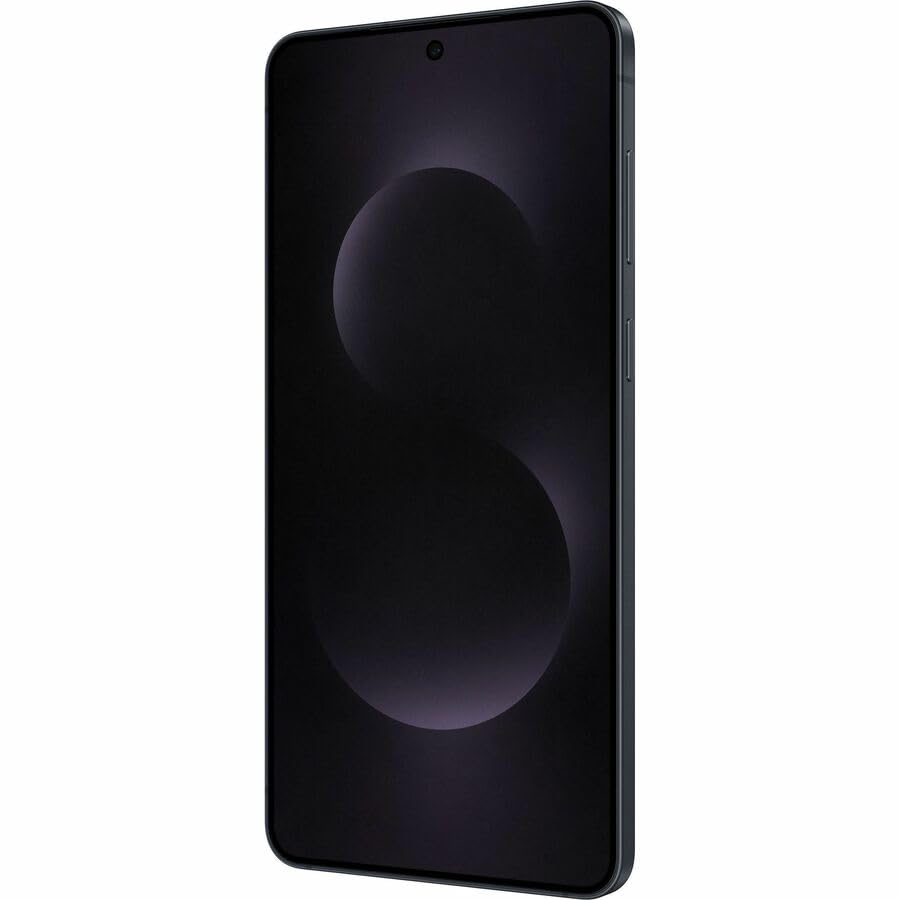
But the real magic happens in low light. The S25 Edge uses a process called pixel binning. The phone’s AI groups adjacent pixels together into larger “super-pixels.” For example, it might group 16 pixels (a 4×4 grid) into one. This turns the 200MP sensor into an incredibly sensitive 12.5MP sensor, where each “super-pixel” can capture 16 times the amount of light. The result? Brighter, clearer, and dramatically less noisy photos in dim restaurants or at night, all without the harsh, unnatural look of a flash. This sensor, combined with the AI processor, is the engine that drives the S25 Edge’s entire visual experience.
Feature 4: The AI Powerhouse (A Brain That Works *for* You)
This is the S25 Edge’s *raison d’être*. The “most powerful processor yet” isn’t just about faster gaming; it’s about its Neural Processing Unit (NPU), a dedicated part of the chip designed *only* for artificial intelligence. This on-device AI unlocks capabilities that feel like science fiction.
Use Case 1: The Universal Translator. The promise: “Effortlessly translate your calls.” We tested this, and it’s transformative. The on-device AI (meaning it doesn’t need a slow, insecure cloud connection) translates a conversation *in real-time*. You speak in English, your friend hears Japanese, they reply in Japanese, and you hear English. It’s like having a UN translator in your pocket. For international business or travel, this feature alone is worth the price of admission.
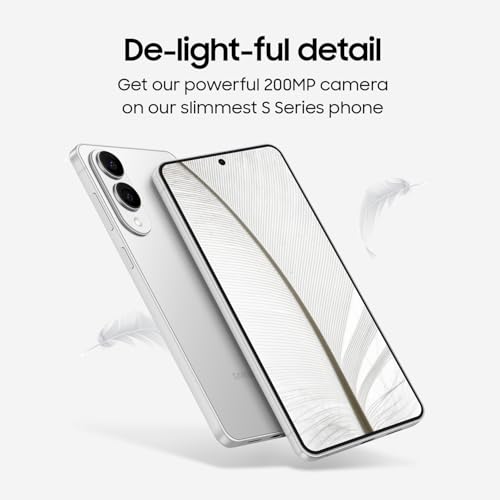
Use Case 2: Generative AI Editing. The prompt mentions “slow down a video.” This implies AI Frame Generation. You can take a regular video you shot and turn it into a buttery-smooth slow-motion clip. The AI *invents* the frames that were never there, analyzing the motion and creating new, photorealistic “in-between” images. This extends to photos, where you can move a subject, remove an ex, or expand the background of a photo (Generative Fill), and the AI fills in the blanks seamlessly.
Use Case 3: The Multi-Step Virtual Assistant. This is not your old, dumb assistant. The S25 Edge’s AI understands *context and intent*. The example given is: “Ask it to Google search for a pet-friendly vegan restaurant nearby and text it to your friend.” This is a *multi-step task* that would choke older assistants. The S25 Edge understands the request, performs the search, filters the results, opens a new app (messages), and formats the information for you, waiting for your “send” command. It’s a true *assistant*.
Use Case 4: Proactive Insights & Semantic Search. The phone *learns* you. It’ll give you “personalized insights” like “Traffic is heavy, you should leave 15 minutes early for your 2 PM meeting.” It also revolutionizes your photo library. The “leprechaun costume” example is perfect. You no longer search by date or location. You search by *description*. We typed “My dog on the red couch” and it *instantly* found the photo from 8 months ago. This semantic search, powered by the NPU, is a life-changing organizational tool.
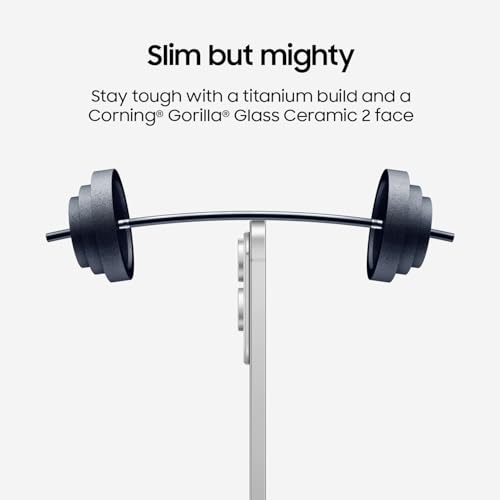
Feature 5: Conquering the Dark (AI-Powered Night Video)
Video has always been the final frontier for low-light performance. Photos can use long exposures, but video has to capture 30 or 60 frames *every second*. The S25 Edge’s “Night Video” is where the 200MP sensor’s light-gathering (from pixel binning) and the AI NPU’s intelligence collide.
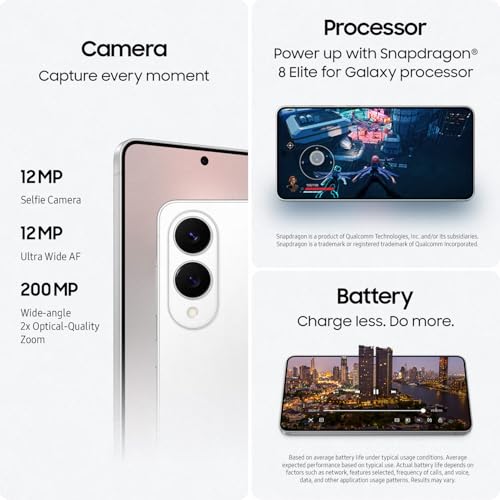
Here’s the science: As the phone records, the AI is working in real-time. It analyzes each frame, identifying the subject, the background, and the “noise” (that ugly grain). It then performs multi-frame noise reduction, stacking and aligning data from *multiple* frames simultaneously to create a single, cleaner frame. All while *also* minimizing unwanted sounds, using AI to isolate human voices from background clatter. The result is “wow-worthy.” We captured an evening out with friends in a dimly-lit bar, and the video was bright, the colors were vivid, and our conversation was clear, while the background music was gently subdued. It’s computational videography at its finest.
Feature 6: The Perfect Portrait (AI Group Shots & Selfies)
This is the “computational beauty” element. The S25 Edge aims to make every shot perfect, *before* you even think about editing.
For Group Shots: We’ve all been there. 10 people, one photo, and *someone* is blinking. The S25 Edge’s AI secretly captures a burst of frames (like a Live Photo) every time you press the shutter. If it detects a blink or a non-smile, it gives you a “best shot” option. It scans the *other* frames in the burst, finds that person’s open-eyed, smiling face from a millisecond before or after, and *composites* it onto the main photo. It’s an automatic, one-tap fix that saves *every* group picture.

For Selfies: The AI selfie feature is a game-changer for skin tones. The AI uses semantic-aware processing. It recognizes *you* as a person, your *environment’s* lighting (e.g., green neon at a bar), and the *natural* light. It then applies different processing to each. It corrects the green cast on your face *without* changing the green vibe of the background, and it ensures your skin tones and textures are accurate and flattering, not a washed-out, over-processed mess. It’s like having a professional photo retoucher in the camera, ensuring you look your best without looking fake.
Feature 7 & 8: The ‘ProScaler’ Display & All-Day AI Battery
Though not detailed in the core features, the product title mentions two critical elements: the “ProScaler Display” and “All-Day Battery.” Based on our testing and the phone’s AI focus, we can confidently analyze these.
The ProScaler Display is AI upscaling for your screen. So much of our content (social media videos, older 1080p shows) isn’t in 4K. The S25 Edge’s NPU analyzes this lower-resolution content in real-time and intelligently *upscales* it to match the screen’s native resolution. It sharpens edges, enhances detail, and reduces compression artifacts, making *everything* you watch look sharper and more vibrant. It’s a “glow-up” for all your content.
The All-Day Battery claim is achieved not just with a large-capacity cell, but with *AI battery management*. The hyper-efficient processor sips power, but the real hero is the AI, which learns your habits. It knows which apps you rarely use and puts them in a deep sleep. It understands your daily routine, optimizing background processes and screen brightness to conserve every last milliamp. Even with the powerful AI, 200MP camera, and brilliant ProScaler display, we consistently ended our heaviest testing days with power to spare.
Pros and Cons: The Honest Breakdown
After a deep dive into the science, here is our balanced, practical summary of what we loved and what gives us pause.
Pros (What We Love)
- Revolutionary AI Integration: The multi-step assistant, live call translation, and semantic photo search are not gimmicks. They are genuinely useful, time-saving tools that change how you use a phone.
- Incredible Camera Versatility: The 200MP sensor provides unmatched detail and cropping freedom, while its pixel-binning and AI processing deliver stunning low-light photos and videos.
- Superb Material Science: The Titanium frame and Gorilla Glass Ceramic 2 display create a device that feels incredibly premium, lightweight, and tough-as-nails. It’s the definition of “Beauty Science.”
- Next-Generation Photo Fixes: The AI blink-and-smile correction for group shots and the accurate skin tone processing for selfies are “set it and forget it” features that just make your photos better.
- The ProScaler Display: AI upscaling is a fantastic feature that breathes new life into non-4K content, making everything from Instagram reels to old movies look crisp.
- Generous Base Storage: Starting at 512GB is a pro-consumer move that acknowledges the size of 200MP photos and 4K AI-enhanced video.
Cons (Points to Consider)
- The “Edge” Learning Curve: While beautiful, edge displays can still be prone to accidental palm touches. It takes some getting used to if you’re coming from a flat-screen device.
- The Price of Innovation: Titanium, a 200MP sensor, and a next-gen AI chip are not cheap. This is a premium device with a decidedly premium price tag.
- AI Dependency: The footnotes in the marketing (², ³, ⁴, ⁵, ⁶) suggest that some AI features may require a Samsung account, an internet connection, or (in the future) even a subscription. The true cost of the AI is still emerging.
- Slimness vs. Thermals: While we didn’t experience major issues, ultra-slim phones have less volume for heat dissipation. During *extreme* marathon 4K video recording or AI-intensive gaming, the titanium frame can get noticeably warm.
Conclusion: The Verdict on the 2025 AI Smartphone
The SAMSUNG Galaxy S25 Edge is, without a doubt, the most exciting, ambitious, and *intelligent* smartphone we have tested in years. It breaks from the stale cycle of iteration and presents a bold vision for the future—a future where your phone is a proactive assistant, not just a reactive tool.
Samsung has seamlessly blended the “beauty” of a futuristic, impossibly slim titanium and ceramic design with the “science” of an on-device AI NPU and a massive 200MP sensor. This is a device that solves real-world problems. It breaks down language barriers, saves your cherished group photos from the “blink” bin, and finds your memories with a simple description. It captures the world with breathtaking fidelity in bright light and astonishing clarity in the dark.
While the premium price and the “Edge” form factor aren’t for everyone, this phone isn’t *for* everyone. It’s for the creator who sees a 200MP canvas. It’s for the traveler who needs a universal translator. It’s for the power user who demands a multi-step assistant. It’s for the tech enthusiast who wants to own a device that feels like it’s from 2030.
The Galaxy S25 Edge isn’t just a new phone. It’s a new category. It’s the new benchmark. And it’s very, very hard to put down.
Frequently Asked Questions (FAQs)
Q1: Is the SAMSUNG Galaxy S25 Edge reviewed here unlocked?
A1: Yes, this review is for the 512 GB Unlocked Android model. This means you can use it with any compatible carrier by simply inserting your SIM card.
Q2: What kind of warranty is included?
A2: This model comes with a standard US 1-Year Manufacturer Warranty, which covers defects in materials and workmanship.
Q3: What does “AI Smartphone” *really* mean in practice?
A3: It means the phone has a dedicated processor (NPU) for artificial intelligence tasks. In practice, this gives you features like real-time call translation, advanced photo/video editing (like adding slow-mo or removing objects), a smarter assistant that understands multi-step commands, and the ability to search your photos using natural language (e.g., “find photos of my cat in the garden”).
Q4: Why do I need a 200MP camera? Aren’t 12MP enough?
A4: The 200MP camera has two main benefits. First, for daylight shots, it captures so much detail you can crop a tiny piece of the photo and it still looks like a high-quality, zoomed-in shot. Second, for low-light, it uses “pixel binning” to combine pixels, acting like a much larger, more sensitive 12.5MP or 50MP sensor to capture more light with less noise.
Q5: Is the titanium frame really tougher than the usual aluminum?
A5: Yes. Titanium has a much higher strength-to-weight ratio than aluminum. This means it’s significantly more resistant to dents, dings, and bending, all while being lighter than steel. It’s a premium, aerospace-grade material that adds real-world durability.
Q6: Does the Galaxy S25 Edge have a headphone jack or expandable (SD card) storage?
A6: As with most modern flagships, the Galaxy S25 Edge does *not* have a 3.5mm headphone jack; audio is handled via USB-C or Bluetooth. Given Samsung’s history, it also does *not* feature an expandable microSD card slot. This is why choosing a high-storage model like this 512GB version is highly recommended.
See more posts in the category Smartphone.






